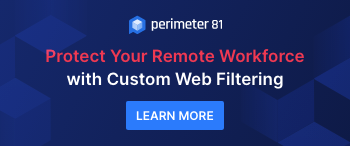Seven Critical Criteria for Cloud Data Encryption

Encrypting the huge number of data files stored in a public cloud today is like bubble-wrapping an entire house. Better to focus on the fragile items that matter.
The unprecedented level of access points into corporate domains leaves information security professionals turning to a number of data protection methods. Encryption has been a primary instrument in the information security toolkit for decades, but requires reevaluation in the face of the digital transformation we are witnessing today.
Encryption, in its traditional form, is a resource-intensive endeavor that often creates nearly as many challenges as it solves. Forward-thinking enterprises looking to leverage modern technologies have an opportunity to redefine their data protection strategy and, in the process, evolve security from a necessary safeguard to a business enabler. To accomplish this, seven critical encryption criteria must be considered.
Criterion 1: Exercise discretion?It’s time to think of our old friend, the 80/20 Rule. Ask yourself what percentage of data within your organization is truly sensitive? More likely than not, the vast majority of your company’s information could appear on a billboard in Times Square with minimal impact; the planning document for Todd’s birthday party does not need to be encrypted.
Ubiquitous encryption can interrupt application function, particularly reporting and search functionality and this is an issue that compounds in today’s highly integrated cloud model. A discretionary and selective approach to encryption secures sensitive data without interfering with the benefits of emerging technologies.
Criterion 2: Align with corporate security policy?There’s no need to start from scratch when you develop guidelines to determine when encryption makes sense. Consult existing security policy within the organization to assess what sensitive information may exist within your environment and use this knowledge to build a foundation for your encryption strategy. Don’t forget to consider internal and external compliance regulations relevant to your business.
Criterion 3: Automation-ready encryption?Once a consensus is reached as to which circumstances warrant encryption, it’s time to take action. Leverage security technologies to identify sensitive content within the enterprise, and use encryption as a remediation tool for especially risky incidents. By automating this process, security teams stand to rapidly mitigate the potential of inappropriate data exposure in an intelligent and content-aware manner – and make a tangible impact on organizational security posture.
Criterion 4: Factor in the human element?Now more than ever before, security initiatives must factor in the needs of end users. If a corporate security program interferes with typical user workflows or is too invasive (agents are out of the question), employees will circumvent corporate systems and leverage the endless alternatives made available to them via readily accessible SaaS applications and, if need be, the opportunity to bypass the corporate network entirely thanks to BYOD.
Criterion 5: The cloud is everywhere.?The question is no longer when organizations are adopting cloud technologies, it’s how. When was the last time you went to an office supply store and bought software in a physical box? It’s okay, I can’t remember, either.
The challenges associated with encryption in the cloud are owed to three phenomena: the explosion of data in the cloud, the expectations of the modern user, and the criticality of preserving native cloud functionality. From 2014 to 2015, we have witnessed 10x growth in the number of files stored in public cloud applications. Encrypting such a high volume of data is analogous to bubble wrapping an entire house rather than focusing on the fragile items that matter.
Meanwhile, security leaders are beginning to understand individuals are leveraging cloud technologies in their business and personal lives, leading to a more efficient, collaborative, and mobile way of life. Users are accessing SaaS applications both inside and outside of traditional corporate networks. And finally, as we have already discussed, non-discretionary encryption can introduce complications in the cloud in the form of broken search and reporting functionality.
Criterion 6: Adaptive architecture?It follows, therefore, that contemporary encryption strategies must be compatible with the cloud-first mentality many organizations are adopting to enable their workforce with the best tools available. To that end, hardware-dependent encryption gateways or solutions requiring traffic rerouting and network reconfigurations have been rendered ineffective and non-preferential. (Disclosure: Cloudlock is one of many vendors in the market that offer a cloud-focused encryption solution.)
Network devices associated with the traditional on-premises encryption model introduce a single point of failure and lack the scalability, ease of deployment, and mobile / cloud compatibility that has become the new standard. Additionally, they miss the growing volume of cloud-to-cloud traffic that never traverses the corporate network, i.e., a file sync and share application integrating with a CRM.
Criterion 7: Encryption is just the beginning?While the security value of encryption is substantial, security professionals must avoid the seductive appeal of relying solely on encryption. Complement encryption strategy with additional best practices for a holistic security program.
Rather than treating users as an adversary, convert them to security ambassadors and allies. Engage in an ongoing dialogue with users to ensure their needs are understood while creating an opportunity to communicate the objectives and value of your organizational security strategy. You might even get them to remove Todd’s Social Security number from that birthday party planning document.
Adeptis: http://bit.ly/1MEAaIf


























